Green-throated Mango (Anthracothorax viridigula) - Birds of the Guyanas 21
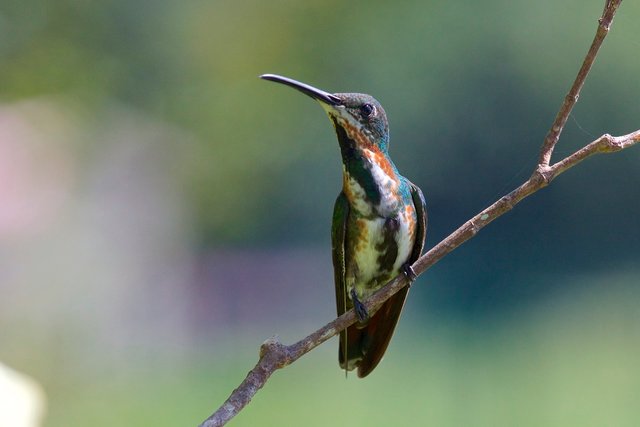
This beautiful hummingbird, the Green-throated Mango, is relatively uncommon. I haven't seen it much this year, but last year around the same time, I saw it almost daily. It was then that I spend days waiting behind my camera on a tripod to capture it in flight. It was not easy and I took hundreds of photographs but my patience and dedication got rewarded.
All these pictures have been posted before and since I haven't had the opportunity this year to repeat the exercise, I'm presenting them to you again in this episode of Birds of the Guyanas.
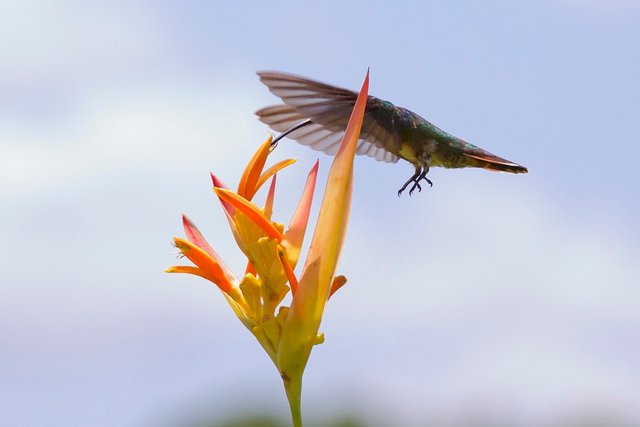
All the birds that you see in this post are juvenile males. Most likely it's the same bird in each picture. The adult male has a completely green throat and misses the orange-brown parts between the green throat and the upper parts. To be honest I'm not a 100% sure if identified it correctly.
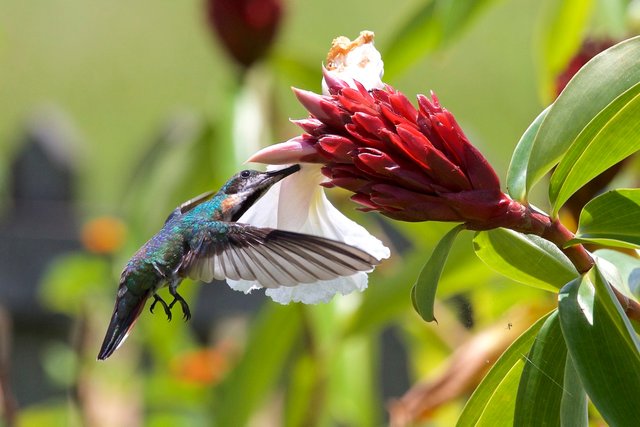
But I went through the 35 hummingbirds that live in Suriname dozens of times and I'm quite convinced that this is a male juvenile Green-throated Mango. If I'm wrong, I hope that somebody can tell me which hummingbird this is.
The Green-throated Mango is a resident breeder with an extensive range from Venezuela, the Guyanas and the north-eastern part of Brazil. It breeds the whole year round with an average clutch of two white eggs. The nest is very similar like the one from a glittering throated emerald that you can see in the next picture.
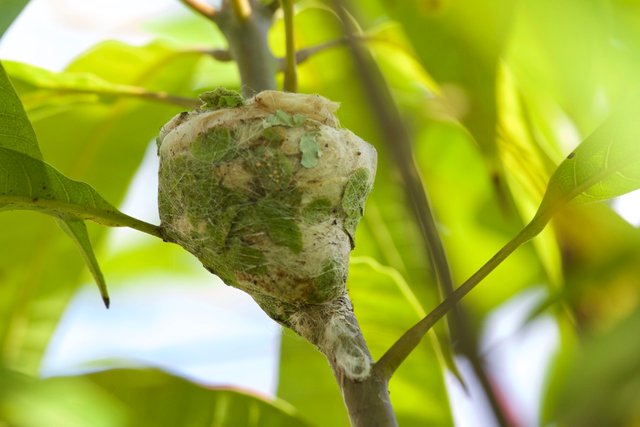
It's a deep cup made out plant material, covered with moss and lined with soft material like animal hair, feathers and the fluff from certain seeds, like the milkweed seeds. It's strengthened on the outside with spider webs that gives the nest an elastic quality so that it can expand when the chick(s) grow. The nest is situated in a tree or bush fairly low to the ground.
It's the female that does all the work. The male's only activity is the actual mating. The building of the nest, incubation of the eggs, feeding of the chicks is all done by the female. The chicks are fed with mainly regurgitated insects, nectar isn't a sufficient source of protein for the young chicks.
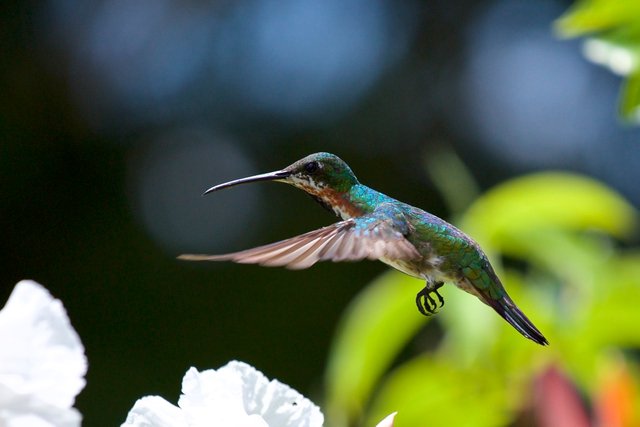
All hummingbirds are excellent flyers, they can even fly backwards. This costs a lot of energy, so they visit many flowers to satisfy their hunger. They eat three times their weight everyday of mainly (sweet, concentrated) nectar but they eat small insects as well. To save energy they spend three-quarters of a day resting on a branch.
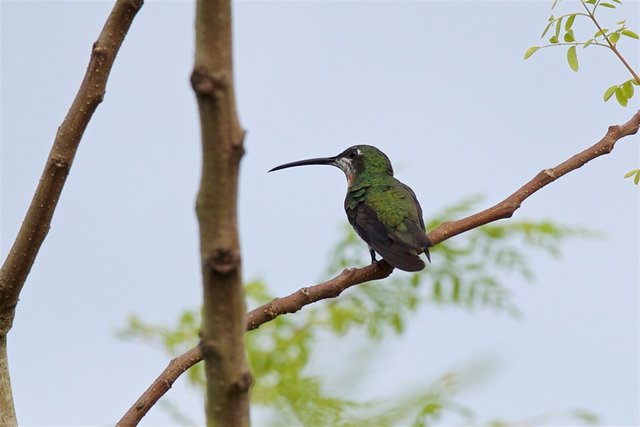
They mainly live in mangrove and swamp forests and moist lowland savannah. The green-throated mango is 10 cm in length and weighs 9 grams.
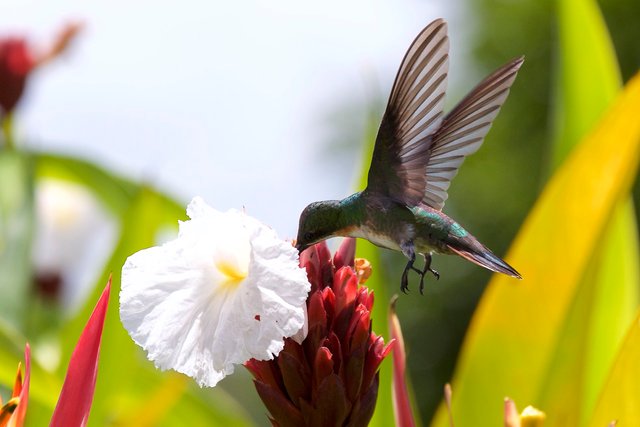
Thank you for visiting my blog and happy birding.

These photos are incredible! An acreage we rented several years ago had delphiniums lining the deck so we would get hummingbirds visiting quite often. We saved the seeds hoping to attract them again at our new property. I will have to let Matt know how long they rest because he is always bewildered at how they survive when they are so tiny and move so quickly! Thanks for the share. -Aimee
Thank you. These little birds are indeed amazing. Some weighing only 2,6 g, like the Blue-tailed Emerald.
great birds, a big plus
Thanks, a great bird it is.